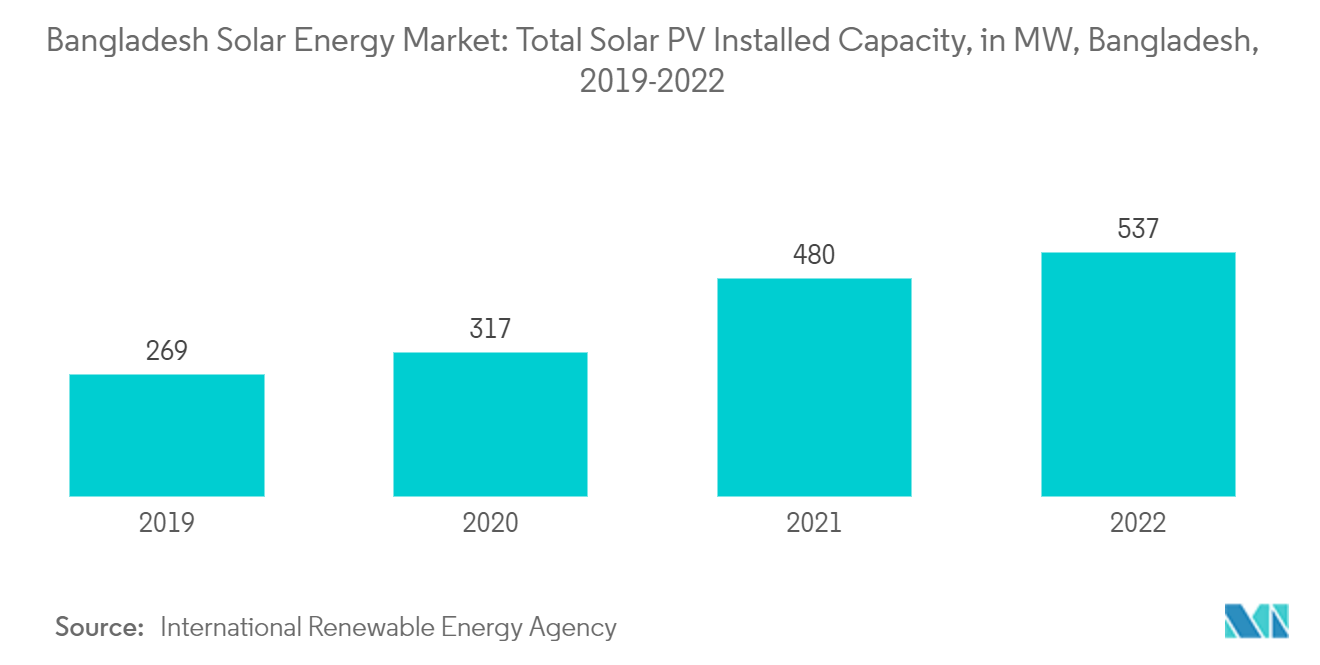Market Trends of Bangladesh Solar Energy Industry
Solar Photovoltaic (PV) Segment Expected to Dominate the Market
- The solar PV segment is likely to hold the largest market share during the forecast period, owing to the declining costs of solar modules and the versatility of these systems for various applications, like electricity generation and water heating.
- According to the International Renewable Energy Agency, Bangladesh's installed solar PV capacity was around 537 MW in 2022, up from 480 MW in 2021. The growth resulted from huge deployments of solar PV installations in Bangladesh, particularly for utility projects. The Bangladeshi Ministry of Energy and Power plans to increase the solar PV installed capacity.
- In January 2022, the Bangladeshi government approved a 70 MW solar PV plant in the Pabna region. Under a 20-year commitment, the government is expected to pay USD 0.1015/kWh for the electricity the projects produce, amounting to USD 215 million.
- Additionally, in January 2023, Rays Power Infra switched on a 275 MW DC solar project in Sundarganj, Bangladesh. The project is the largest solar energy project in the country.
- Therefore, due to these developments, the solar PV segment is expected to hold the largest market share in Bangladesh during the forecast period.

Increasing Electricity Demand to Drive Market Growth
- Electricity is a significant energy source in Bangladesh's industrial and agricultural sectors. The Bangladeshi Ministry of Energy and Power predicts that the country is expected to suffer power shortages as the development of new power plants lags behind the country's rapidly expanding energy consumption.
- As of 2022, according to the Bangladesh Power Development Board, the country had generated 85,607 MkWh of electricity, and the electricity generation capacity in the country increased by 6.4 % compared to the previous year.
- Moreover, the Bangladeshi government plans to raise an investment of USD 127 billion in the power sector to increase the electricity generation capacity and meet the expected demand for electricity by 2041.
- Furthermore, in January 2023, the government of Bangladesh announced its target to generate 40 percent of power from clean energy by 2041 and import about 9,000 MW under regional and sub-regional cooperation from neighboring countries.
- The Bangladeshi government (GOB) wants to secure 40% of its electric energy-producing capacity from renewable sources to reach the desired targets. To accomplish this goal, GOB has launched several projects to promote renewable energy from diverse sources, including solar, wind, biomass, biogas, and hydro.
- Thus, Bangladesh is focusing on renewable energy sources to meet the future electricity demand, propelling the growth of the country's solar energy market.


